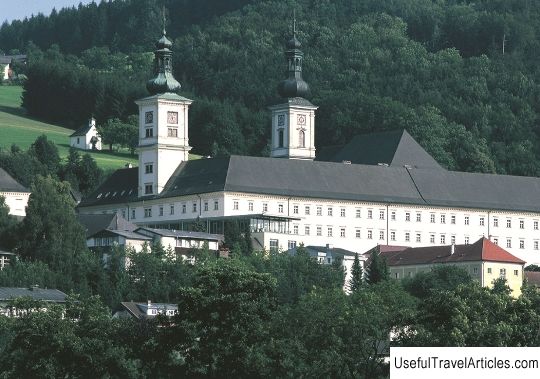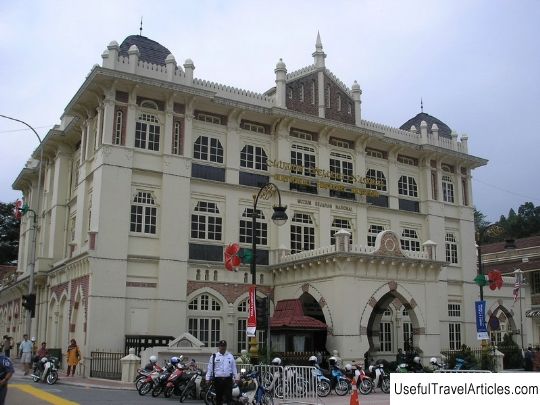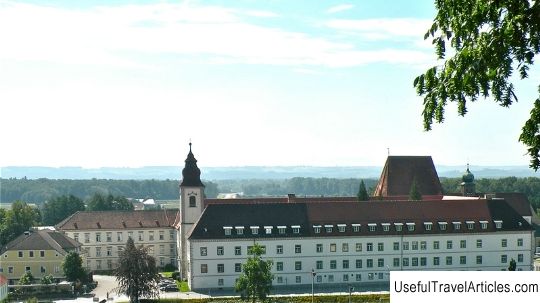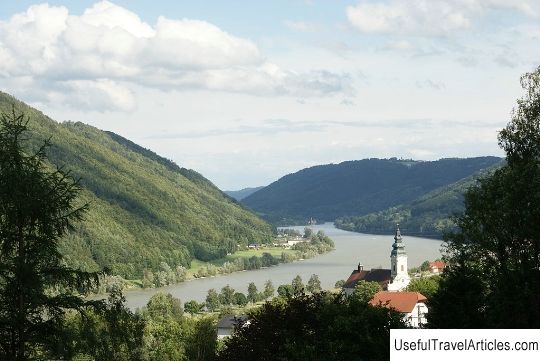Cistercian Monastery Schlierbach (Stift Schlierbach) description and photos - Austria: Upper Austria
Rating: 8,9/10 (200 votes) 
Cistercian monastery of Schlierbach (Stift Schlierbach) description and photos - Austria: Upper Austria. Detailed information about the attraction. Description, photographs and a map showing the nearest significant objects. The title in English is Stift Schlierbach. Photo and descriptionThe Cistercian Abbey of Schlierbach is located in Austria, in the city of the same name. The original building of the convent was built in 1355, but already around 1556, just after the Reformation, the monastery was abandoned. In 1620 the monastery resumed its work, and in 1672-1712 it was rebuilt in the Baroque style. Due to the unrest in the country and during the Napoleonic Wars, Schlierbach Abbey fell into decay again, and was restored only towards the end of the 19th century. In the 20th century, things in the monastery improved: glass production and cheese making brought large incomes. Now, not only the abbey is open to visit, but also various monastic workshops. Tourists can also dine at the monastery restaurant. The Schlierbach Convent was founded in 1355 by Eberhard von Wallsee, who ruled the province of Upper Austria. The monastery was founded in the building of the former castle of the Wallsee family, and on February 22 of the same year the first novice nuns arrived at the monastery. At the same time, a cloister was added to the abbey. The main attraction of the abbey is the Gothic wooden sculpture of the Virgin Mary, dating back to 1320. It is now housed in the baroque covered gallery of the abbey. According to legend, this statue was brought from Swabia by the first novices of the newly opened monastery. During the Reformation, the abbey was abandoned for 64 years, first it was ruled by Lord Losenstein, head of Upper Austria, and later the Schlierbach Abbey was transferred under the management of the "Scottish" monastery in Vienna and Kremsmunster Abbey. In 1620, the Schlierbach Abbey was converted into a Cistercian monastery, and monks from the Rhine Abbey, located near Graz, arrived here. In the years 1672-1712, the monastery was rebuilt in the Baroque style, construction work was carried out under the direction of the famous architect of the time, Pietro Francesco Carlone. The main cathedral itself was completed in 1680-1682, the ceiling of the church was especially bright and elaborately decorated. In 1770, an organ appeared in the main cathedral, now only the front part remains of it, and the operating organ itself is a modern one, completed in 1985. The modern library building was built in 1712 and is a cruciform ceremonial hall with Corinthian wooden columns. It should be noted that due to poor organization the collection of books remained rather modest by the end of the century. Furthermore, due to the turbulent situation in the country, many books were hidden in storage, then lost, and only in 1974-1975 the library was finally restored. Schlierbach Abbey fell into decay in the second half of the 18th century, during the reign Emperor Joseph II, which was facilitated by the reforms carried out by him, limiting the power of the Roman Catholic Church. At the beginning of the XX century, the economic growth of the abbey began, largely due to the fact that in 1884 a glass workshop was opened at the monastery, which won world recognition. It was the glass workshop of the Schlierbach Abbey that prepared the stained glass windows for the Resurrection Chapel in Brussels, built in 1907. Since 1925, a school has been operating at the monastery, which in 1938 took up missionary work, going on a mission to the Brazilian state of Bahia. The monastery also has a gallery of Margrethe Bilger, where works of wood and glass are presented by the artist herself and various other exhibitions of contemporary art are held. The abbey is also famous for its cheese-making, opened in 1924, where St. Severin's cheese is made, recipe which was made by Father Leonard in 1920 and dedicated to Saint Severin of Noric, the patron saint of Austria and protector from hunger. Visitors to the abbey can taste a variety of cheeses and taste the monastery wines, ciders and beers.       We also recommend reading Basilica di San Paolo fuori le Mura description and photos - Italy: Rome Topic: Cistercian Monastery Schlierbach (Stift Schlierbach) description and photos - Austria: Upper Austria. |




